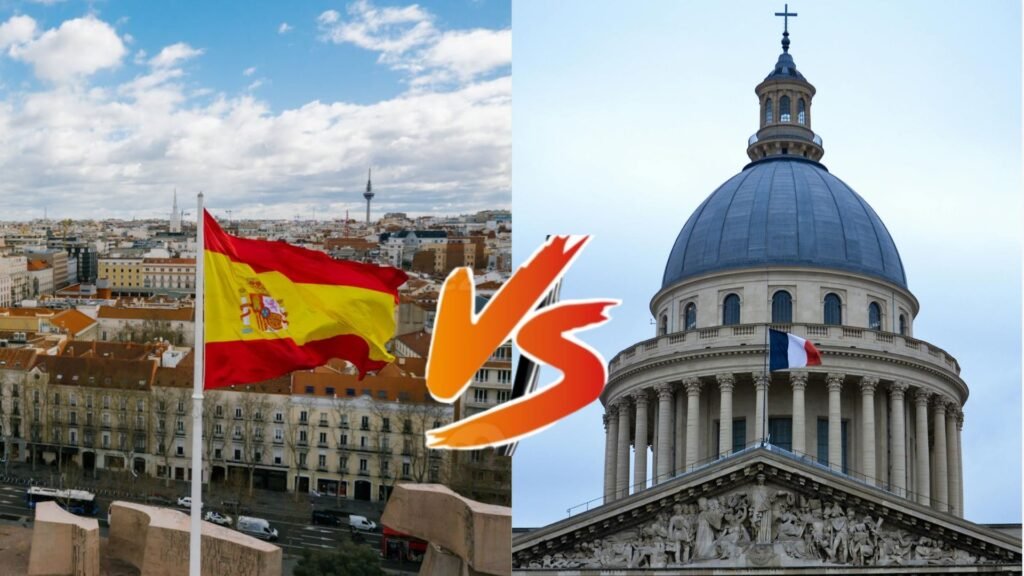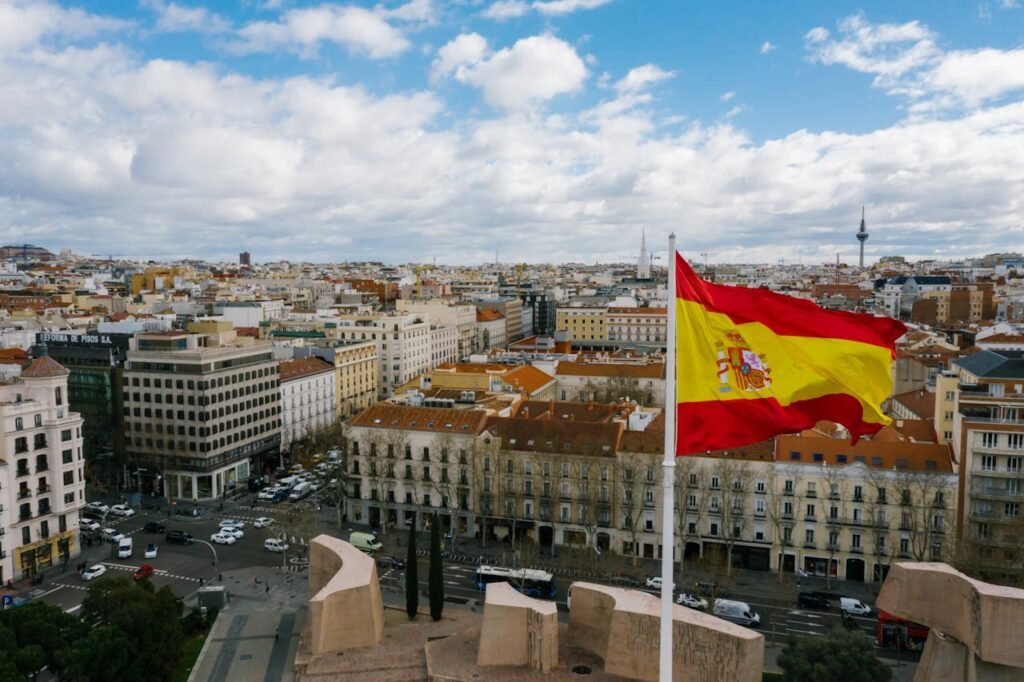
France or Spain where is it better to live | Everything You Need to Know
When someone decides to make a significant life change by relocating not just to another city but to an entirely different country, a crucial question arises: where should they go, and which destination offers the best living conditions? The answer largely depends on individual preferences, since each person has unique requirements for comfort, climate, entertainment, and job opportunities. Some people might dislike hot weather, while others may long to escape harsh winters and move to a warm, sunny environment.
France and Spain are both located in the European part of Eurasia and are members of the European Union. This means that citizens of either country enjoy the freedom to live, work, and travel across the EU without additional permits. However, while these two countries share some similarities, they also offer distinct local advantages.
If you’re considering living in France or Spain, understanding the differences between the two is key to making an informed decision. This guide will compare key factors like climate, culture, job opportunities, and cost of living to help you determine which country aligns better with your lifestyle.

Climate and Weather France
France is renowned for its diverse climates, which vary significantly across its regions. This diversity offers residents the chance to experience a range of weather conditions, from cool summers in the north to sunny, Mediterranean days in the south. Understanding these climatic differences is crucial when choosing where to settle.
Northern France
In northern regions, such as Paris, the climate is temperate. Summers are relatively cool, while winters are mild, making it a comfortable choice for those who prefer moderate weather without extreme heat or cold.
Southern France
The south, encompassing regions like Provence and the Côte d’Azur, enjoys a Mediterranean climate with pleasant temperatures year-round. Frosts are rare, and while spring and autumn rains can be heavy, they are typically brief. However, the mistral wind—a cold and dry breeze from the Rhône Valley—blows for about 100 days a year and is worth considering.
Western France
The western region, particularly Brittany, features an Atlantic climate. This means mild winters (around +7°C) and cool, cloudy summers (around +17°C). Strong winds and overcast skies are common, lending the area a unique maritime charm.
Eastern France
Eastern regions experience a continental climate, marked by greater temperature variations. Winters are cold (around 0°C in January), and summers are warm (about +20°C in July). This makes it ideal for those who enjoy distinct seasonal changes.
Mountain Regions
In areas like the Alps and the Pyrenees, a mountain climate dominates. Summers are cool, and winters are cold, often bringing heavy snow. These regions are perfect for winter sports enthusiasts and those who appreciate alpine scenery.
France’s variety of climates ensures there’s something for everyone, whether you prefer the warmth of the Mediterranean, the coolness of the Atlantic coast, or the seasonal contrasts of the continental and mountain regions. When choosing a region to settle in, it’s crucial to consider how these climatic features align with your preferences and lifestyle.

Climate and Weather Spain
Spain offers a predominantly Mediterranean climate, characterized by warm winters and hot summers, making it a haven for sun-seekers and beach lovers. However, its climate varies across regions, providing options for different preferences. Here’s a breakdown:
Central and Southern Spain
The central and southern regions, including Andalusia, are known for their subtropical climate, with hot summers and mild, pleasant winters. The Canary Islands, located off the northwest coast of Africa, also enjoy a subtropical climate, with year-round warmth and sunshine, making them a favorite destination for those escaping harsh winters.
Coastal Areas
The Mediterranean coastline, stretching from Barcelona to Valencia and down to Málaga, boasts ideal conditions for beach holidays, with long, hot summers and mild winters. These regions are perfect for outdoor activities, seaside relaxation, and water sports.
Northern Spain and Mountainous Areas
The climate in northern Spain, including regions like Galicia, Asturias, and the Basque Country, is cooler and wetter, with a strong Atlantic influence. Summers are mild, and winters can be chilly, offering a contrast to the warmth of the south. Mountainous areas like the Pyrenees and Sierra Nevada experience cooler summers and cold winters, ideal for winter sports enthusiasts.
Comparing Spain and France
France offers a broader variety of climates, allowing residents to experience everything from snowy alpine winters to the balmy Mediterranean summers of the Côte d’Azur. This diversity provides flexibility—one can settle in Paris, enjoy a beach holiday in Nice, or ski in the Alps.
In contrast, Spain’s climate is more uniform, with most of the country experiencing sunny, warm conditions that appeal to those seeking a consistently warm and relaxed lifestyle.
Spain’s abundance of sunshine hours and picturesque beaches make it an excellent choice for sun enthusiasts and beachgoers. Meanwhile, France’s diversity in climate and geography allows for a wide range of experiences, from cultural city life to alpine adventures. Your choice depends on whether you prefer variety and seasonal contrasts (France) or warmth and sunshine year-round (Spain).
History and Cultural Differences
Every country boasts its own rich history and unique cultural characteristics. What resonates with you the most is a deeply personal choice, shaped by your preferences, values, and experiences.
Spain and France differ significantly in their cultural norms, which profoundly shape daily life and social interactions. In Spain, daily routines are more flexible, with meals taking place later than in many other countries. Lunch is typically enjoyed around 3 PM, while dinner often starts as late as 10 PM. The siesta, a mid-afternoon rest period, reflects Spain’s more relaxed and unhurried pace of life.
In contrast, French culture values punctuality and formality. Social interactions in France often include a degree of constructive critique, which is not only accepted but also seen as a normal part of communication. Understanding these cultural subtleties is crucial for anyone planning to relocate, as they play a key role in shaping everyday experiences and social dynamics.
Employment Opportunities
Comparing France and Spain from an employment perspective reveals significant differences, particularly in terms of job market dynamics, work culture, and labor laws.
Spain’s openness to expatriates, particularly in tourism and agriculture, provides accessible entry points for foreign workers, though the seasonal nature of many jobs may limit long-term stability. Its relaxed work environment also reflects the country’s overall lifestyle.
In contrast, France’s competitive job market requires a higher degree of preparation, particularly in terms of language fluency and professional qualifications. Industries such as luxury goods, aerospace, and technology offer strong career paths, but breaking into these fields can be challenging for non-natives.
Cost of Living France or Spain
The cost of living can vary significantly depending on location and individual lifestyle preferences.
In Spain, the cost of living tends to be lower, particularly in terms of housing. Smaller cities like Valencia offer a more affordable lifestyle, making them attractive to retirees or those seeking a budget-friendly life. Utilities and internet services in Spain are generally cheaper, reducing monthly expenses. Public transportation is also more affordable, and daily costs, such as dining out and grocery shopping, are notably lower. This allows residents to maintain a comfortable standard of living without as much financial strain.
In France, the cost of living, particularly in major cities like Paris, is higher. Housing, food, clothing, transport, and entertainment costs are all significantly more expensive compared to Spain. For instance, food in France is about 36% more expensive, housing maintenance is 18% higher, and even leisure activities can cost 28% more. While Paris is the most expensive city in France, even other areas like Bordeaux or Lyon can be costlier than Spain’s major cities. (data from expatistan.com on May 5, 2022).

Availability of health care France or Spain
Both Spain and France offer excellent healthcare systems, but there are subtle differences in their rankings. France’s healthcare system generally scores slightly higher due to its exceptional medical services and responsiveness.
On the other hand, Spain is known for its modern healthcare system, which is highly accessible and affordable for residents. It consistently ranks among the top healthcare systems worldwide. Both countries are equipped with similar high-end diagnostic and treatment technologies, ensuring that residents receive top-quality care.
Ultimately, the choice between the two may depend on personal preferences regarding healthcare accessibility and cost.
Language Spain vs France
Language plays a vital role in daily life and social integration in both Spain and France. In Spain, Spanish is the dominant language, and its similarity to other Romance languages, such as Catalan, Galician, Italian, and Portuguese, can provide learners with a broader scope for communication across various regions and countries.
In France, mastering French is essential for both social integration and gaining the acceptance of locals. The French take great pride in their language, viewing it as a cornerstone of their identity and culture. Respecting and understanding French is crucial for building meaningful relationships and fully immersing oneself in French society. Both countries value their linguistic heritage, making language proficiency an important aspect of living and thriving in these cultures.

Property Market France vs Spain
France Property Market:
- Generally higher property prices in major cities like Paris, along the French Riviera, and in some urban centers.
- More affordable properties in rural regions like Nouvelle-Aquitaine and the Pyrenees.
- A more stable market with lower risk of sharp price fluctuations.
- Attractive to foreign buyers, but subject to more regulations than Spain.
- The legal process is more complex, requiring notaries and additional paperwork.
- Strong rental market, especially in tourist destinations like Paris, Provence, and the Alps.
- Tenant protection laws are stricter, with strong long-term rental regulations.
- Property taxes can vary widely across different regions.
- Rich in culture and diversity, offering varied landscapes from the Mediterranean to the Alps.
- Popular among those seeking a slower, more peaceful pace of life, particularly in the countryside.
Spain Property Market:
- Generally more affordable than France, especially in rural and coastal regions.
- Coastal areas like Costa Brava and the Balearic Islands can be expensive.
- The market tends to be more volatile, although it’s recovering well post-2008 crisis.
- Attracts significant foreign investment, particularly from Europeans and expatriates.
- Offers a Golden Visa for non-EU nationals investing over €500,000 in property.
- Strong demand for short-term vacation rentals in urban and coastal areas.
- Regulations for short-term rentals are tightening, notably in Barcelona.
- Easier property purchase process with fewer bureaucratic barriers compared to France.
- Lower overall cost of living, appealing to retirees and investors.
- Known for a relaxed lifestyle, especially along the Mediterranean coast.
Both markets offer unique advantages depending on your priorities. Spain is more accessible and dynamic for foreign investors, while France provides stability, cultural richness, and a slower pace of life, particularly in rural areas.
Social Life and Community France or Spain
Many expatriates often find it easier to integrate socially in Spain than in France. In Spain, people tend to be more approachable, and the social atmosphere is typically warmer and more relaxed, which encourages casual interactions. This sense of community helps newcomers feel welcomed and comfortable.
In contrast, social interactions in France can be more formal and complex. The French social environment may sometimes feel more hierarchical, with a stronger emphasis on tradition and etiquette. While Spanish culture tends to be more egalitarian, the French can emphasize class distinctions, which might lead to a sense of elitism. Being mindful of these cultural differences can help expatriates better adapt and navigate their new social surroundings.

Food and Cuisine France vs Spain
Spanish and French cuisines, while both Mediterranean at heart, each bring their own unique flair to the table, showcasing centuries of culture and tradition.
French Cuisine:
- French food is known for its refinement, emphasizing technique and the art of blending ingredients to create balance.
- Butter and cream form the base for many French sauces, like béchamel and hollandaise, elevating the richness of dishes.
- Cheese is integral to French cuisine, with varieties like brie, camembert, and roquefort enjoying international fame.
- Bread, particularly baguettes, is a symbol of French culinary culture, often served at every meal.
- The French are known for delicate pastries such as croissants, éclairs, and tarts, perfected through meticulous techniques.
- Wine is central, with vineyards across the country producing some of the world’s best varieties, including Bordeaux, Burgundy, and Champagne.
- Coq au vin, a dish made with chicken braised in red wine, and cassoulet, a hearty stew from the southwest, are comforting, rich meals.
- French regions like Provence are known for using fresh herbs such as rosemary and thyme to enhance the flavors of vegetables and meats.
- Crème brûlée and mousse au chocolat are popular French desserts, offering a sweet end to a meal.
Spanish Cuisine:
- Spanish food is deeply rooted in regional diversity, with each area boasting its own distinct flavors and ingredients.
- Olive oil is a cornerstone of Spanish cooking, used in everything from frying to dressing salads.
- Tapas—small plates meant to be shared—are a hallmark of Spanish dining, encouraging variety and community.
- Paella, originating from Valencia, is a world-famous dish made with saffron-infused rice, seafood, or meats.
- Chorizo is a widely popular cured sausage, often enjoyed with a variety of tapas or stews.
- Gazpacho, a refreshing cold tomato soup, is perfect for the hot Spanish summers.
- Tortilla Española, a hearty potato omelette, is a beloved staple served in almost every household.
- Seafood, such as anchovies, sardines, and octopus, plays a huge role, especially along the Mediterranean coast.
- Spanish desserts include churros and flan, a caramel custard.
Both countries offer a wealth of flavors, but while Spain often favors bold, simple dishes that highlight fresh ingredients, France takes a more intricate, technique-driven approach to food preparation. Whether it’s a lively meal with tapas in Spain or a quiet, decadent dinner in France, both cuisines invite you to experience their cultural heart.

Travel and Transportation
Spain and France both have well-developed public transportation systems, but they offer different advantages depending on your priorities.
Spain tends to have lower fares for trains and buses, making it an affordable choice for travelers. However, rural areas in Spain may not have as many transportation options, which could be inconvenient for those living outside urban centers.
France, on the other hand, boasts a highly integrated public transport system, where passengers can use a single ticket for various modes of transportation, providing added convenience. Additionally, larger French cities often feature well-developed cycling infrastructure, encouraging eco-friendly travel.
In summary, Spain is a cost-effective option, but France excels in convenience, especially in urban areas. Both countries have reliable transportation networks, depending on your preferences for price or ease of travel.
Popular Regions to Live
Southern France is celebrated for its stunning landscapes and Mediterranean climate, making it a popular destination for retirees and expats. Provence, with its beautiful scenery and vineyards, offers a peaceful lifestyle and is perfect for those seeking tranquility. The French Riviera, known for its glamorous ambiance and breathtaking coastal views, is a hotspot for those who enjoy luxury living.
In Spain, the Basque Country stands out with its unique culture and cuisine, attracting those keen on regional charm. Both countries boast a variety of regions, each offering a distinct lifestyle and appeal.
Summary
Spain generally offers a warmer climate, more affordable living, and a laid-back atmosphere. The Mediterranean lifestyle, low cost of living, and friendly community make it an attractive choice for many. France, however, is known for its rich cultural heritage, varied climate, and sophisticated cuisine, appealing to those who appreciate history and formality.
Ultimately, choosing between Spain and France depends on personal preferences. Both countries offer unique experiences, and whichever you select, you’re sure to find a place that feels like home.

What is better –France or Spain?
Both France and Spain are excellent options for those considering a change of residence, each offering distinct advantages depending on personal preferences.
France: Known for its refined culture, gourmet cuisine, and breathtaking landscapes such as the Alps, Pyrenees, and Mediterranean coast, France is ideal for history, art, and wine enthusiasts. Its rich heritage, elegant lifestyle, and diverse regions make it a top choice for those seeking cultural depth and natural beauty.
Spain: Spain, on the other hand, offers a vibrant and passionate atmosphere, with lively festivals, delicious tapas, and beautiful beaches. The country is perfect for outdoor activities, surfing, and embracing a more relaxed, sunny lifestyle. Spain’s easy-going vibe and welcoming people make it a great destination for those who value a lively social scene and a love of the outdoors.
Ultimately, the decision comes down to what aspects of life matter most to you—whether it’s the sophisticated culture of France or the energetic, laid-back atmosphere of Spain.
